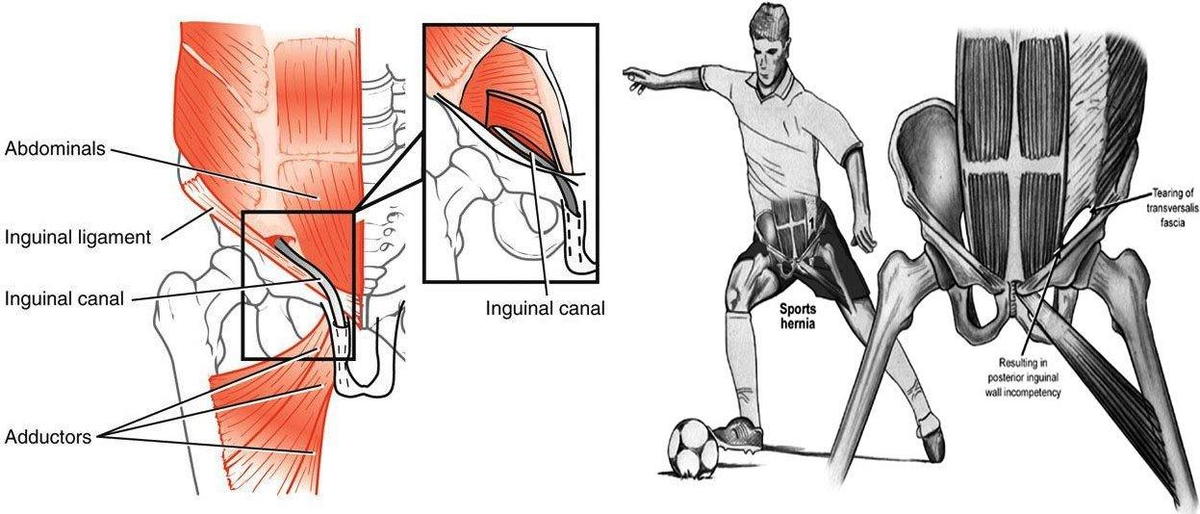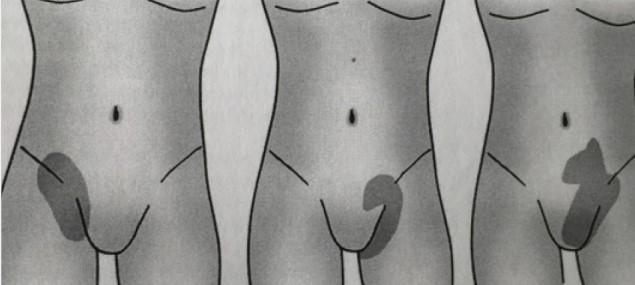Abdominal, umbilical, and femoral hernias are no joke. While the pain that encompasses hernias can be debilitating in and of itself, there are also severe complications that can encompass abdominal hernia’s including part of the intestines becoming twisted and trapped leading to incarceration of the bowel. This can ultimately lead to necrosis or death within the bowel which can result in resection or removal of the bowel and/or can lead to an infection of the blood called sepsis which is life threatening if untreated.
One condition that was often confused with abdominal and femoral hernia’s is a Sportsman hernia or athletic pubalgia. This is a poorly named condition in that nothing is specifically herniating or getting trapped like with other types of abdominal or umbilical hernias. It is however due to a strain or tear of any soft tissue within the lower abdomen or groin area. This is why the term Sportsman hernia is falling out of favor and why Athletic pubalgia is more accepted, although this condition is also found in non-athletes, so there may be a better term for this in the future.
The most common muscle injury in athletic pubalgia is a tear of the lower external or internal oblique muscles right at their attachment onto the top of the pelvis known as the pubic tubercle or if it involves the hip adductors, the pubic bone. This is in contrast to umbilical hernias that occur in the inguinal canal and are closer to the pubic tubercle, but still in a different location with different symptoms.

Notice how the left foot is in plantar flexion with twisting and loading of the hip prior to kicking
The main cause of this is sporting activities that involve planting of the feet with maximum twisting of the upper body especially with sudden deceleration or acceleration seen in ice hockey, soccer, wrestling, and football, among other sports. Symptoms include lower abdominal or groin pain most notably with twisting or any activity and better with rest. Over time however, if treated inappropriately, there is a potential risk for developing an inguinal hernia which can further lead to incarceration of the bowel and necrosis.

Dark grey = reported pain locations for athletic pubalgia.
One easy test to detect a sportsman hernia is trunk flexion (sit up) vs. resistance. To do this, get down in the sit up position and while someone tries to hold your upper body down, try to perform a sit up. Intense pain in the lower abdomen or groin with this maneuver is suggestive of athletic pubalgia (see image above). X-rays are not very helpful, but advanced imaging such as diagnostic ultrasound and/or MRI can be utilized to look for tears or inflammation of the involved muscles or tendons and to rule out inguinal or other types of abdominal hernias.
Treatment will include both non-surgical and surgical options. Non-surgical options include rest, ice, compression, physical therapy, anti-inflammatory supplements and medications, among other conservative therapies utilized. Expected time table with proper treatment is about 4-6 weeks on average. Surgical options are performed to repair the tear and reattach the muscle or tendon as appropriate if the patient does not respond to conservative therapies. Return to play time is averaged at 6-12 weeks.
